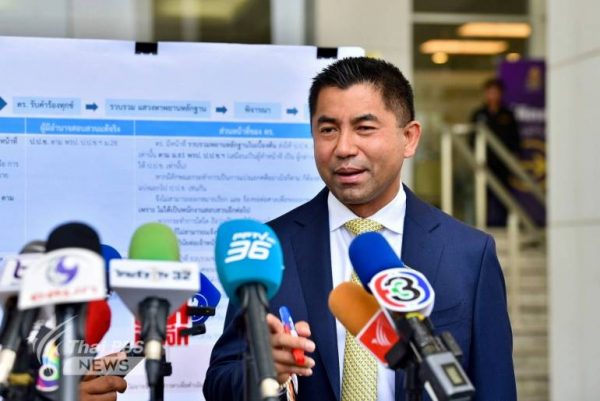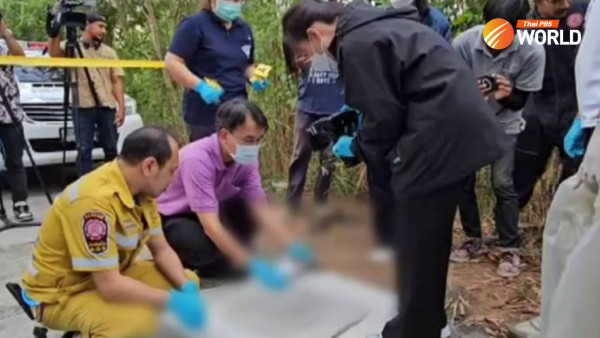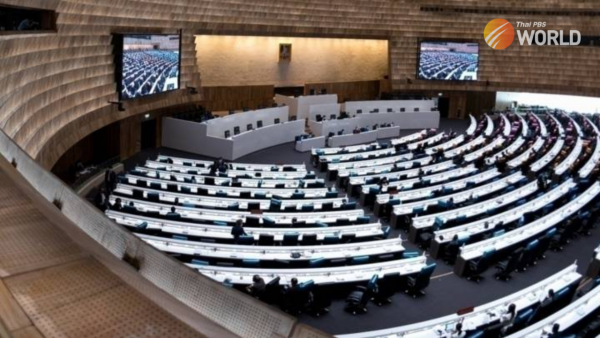Pieces of history and art from Berlin to Bangkok

Two original segments of the Berlin Wall, which have been turned into pieces of art, were unveiled in the compound of the German Embassy on Sathorn Road this afternoon.
German Ambassador-designate Georg Schmidt described the concrete slabs as symbols of the “iron curtain” that divided not only Berlin but also Germany and the whole of Europe during the Cold War and at the same time a reminder of human desire for freedom and peace. They were donated to the embassy by Axel Brauer, a German entrepreneur from Berlin with investments in Thailand. Brauer also sponsors vocational training at the Chitralada Technology College, a project supported by H.R.H. Princess Sirindhorn.
The segments were unveiled in a ceremony presided over by Ambassador-designate Schmidt and attended by Deputy Minister of Foreign Affairs Virasakdi Futrakul and several foreign dignitaries and Thai guests. Three painters from Thailand, France and Germany made joint efforts to turn the segments into pieces of art.
Ambassador Schmidt noted in his speech that the collapse of the Berlin Wall which signified the end of the Cold War in 1989 was remarkable for its peaceful nature.
“One of the main messages of the protestors during the demonstrations was “no violence”. Unexpectedly the security services allowed the peaceful protests. The changes all occurred without the cycles of violence, hatred and revenge. This was truly a miracle. But it shows the potential for peaceful change if people can agree how to disagree,” he said.
The Berlin Wall was constructed as what the ambassador described as a “surprise action” in 1961 to stop East Germans fleeing their communist country to seek a better life in the democratic society of West Germany. Until 1989 more than 100 people were killed trying to cross into the West.
The ambassador recalled that when the Berlin Wall was still running right through the heart of Berlin, artists began to use its Western side in defiance of East German authorities who considered painting of the wall, which was a property of the East German State, as illegal.
“When the first paintings appeared East German border guards stepped out and immediately painted them over. But this was soon given up and later even international wall painting competitions took place. Artists – some of whom have become internationally known as “wall painters” – wanted to “bring happiness to the Wall” and overcome or transform its inhuman purpose and character,” he said.
Ambassador Schmidt said the German Embassy decided to follow this practice and invited three artists from Germany, France and Thailand to transform the segments as well into an international work of art and a symbol of close relationship between the peoples of the three countries.
He told Thai PBS World that the embassy will consider organizing events that will allow members of the public to visit the historical pieces of art in the embassy compound.






